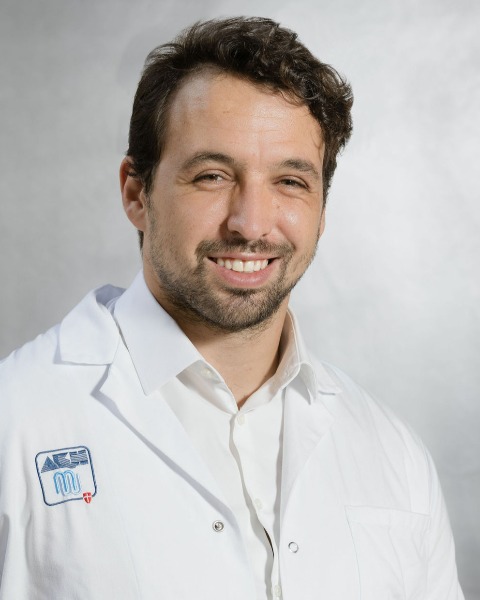Adult Cardiac
Category: Scientific Abstract: Oral/Poster
Minimally invasive aortic valve replacement with rapid deployment valves versus transfemoral transcatheter aortic valve replacement: a propensity matched analysis in 366 patients

Paul Werner, MD (he/him/his)
Surgeon
Department of Cardiac surgery, Medical University of Vienna
VIENNA, Wien, Austria
Presenting Author(s)
Disclosure(s):
Paul Werner: No financial relationships to disclose
Purpose: Guidelines recommend transfemoral transcatheter aortic valve implantation (TF-TAVI) for patients with aortic stenosis above the age of 75a, irrespective of surgical risk.
These patients were considered a prime target for minimally invasive aortic valve replacement (MIS-AVR) with rapid-deployment valves. This study compared both procedures regarding survival and valve-related adverse events.
Methods: Between 04/2011 and 06/2022, 926 patients received either isolated MIS-SAVR with a rapid-deployment (RD) valve (n=400) or TF-TAVR (n=526) at a single center. A propensity score was created with 18 parameters including demographics, comorbidities, surgical risk and anatomical features.
Following exact matching after maximum propensity score difference, the final cohort (n=366) included 183 matched pairs. Adverse events were classified after the EACTS/ STS/ AATS guidelines for reporting morbidity and mortality after valve interventions (1). Descriptive methods were applied to characterize the study cohort and a log-rank test was performed to compare survival between groups. A multivariate cox regression model was created to identify risk parameters for mortality.
Results: The mean follow-up was 39±30 months for survival and 35±30 months for adverse events. The 30-day mortality was 0% (MIS-SAVR) and 3.3% (n=6, TF-TAVI, p=0.013), respectively. Perioperative Stroke was observed in 2.7% (n=5, MIS-SAVR) vs 2.1% (n=4, TF-TAVI, p=0.74) and embolic events were observed in 6% (n=11, MIS-AVR) vs 4.9% (n=9, TF-TAVI, p=0.66). Non-structural valve dysfunction was observed in 3.8% of MIS-AVR (n=7, of which were 3 severe) vs 13.2% of TF-TAVI (n=24, of which 3 were severe, p=0.003).
New Pacemaker Implantation occurred in 7.7% (n=14 MIS-SAVR) vs 14.8% (n=27, TF-TAVI, p=0.026). Aortic valve re-intervention was observed in 3.3% (n=6, MIS-SAVR) vs 1.6% (n=3, TF-TAVR, p=0.315). More patients in the SAVR group received transfusions, however, the mean number of transfusions did not differ significantly between groups (p=0.54). Overall survival at 1-year and 3-years follow-up were 98% and 88% for MIS-SAVR group and 88% and 67% for the TF-TAVR group respectively (log-rank p< 0.001). The type of procedure (TAVR, HR 2.59 [1.50; 4.46], p< 0.001), embolic events (HR 2.38 [1.16; 4.88], p=0.018), acute kidney injury (HR 2.06 [1.04; 4.10], p=0.039), EuroScore II (HR 1.16 [1.05, 1.28], p=0.004) were identified as independent predictors for mortality in the multivariate cox regression model.
Conclusion: Minimally invasive AVR with RD-valves still represents an excellent treatment modality for AS and was associated with a lower mortality, lower rates of permanent pacemaker implantation and paravalvular leakage compared to TF-TAVR in an older, low-risk patient cohort.
Identify the source of the funding for this research project: No funding was used for conduction of this study.
